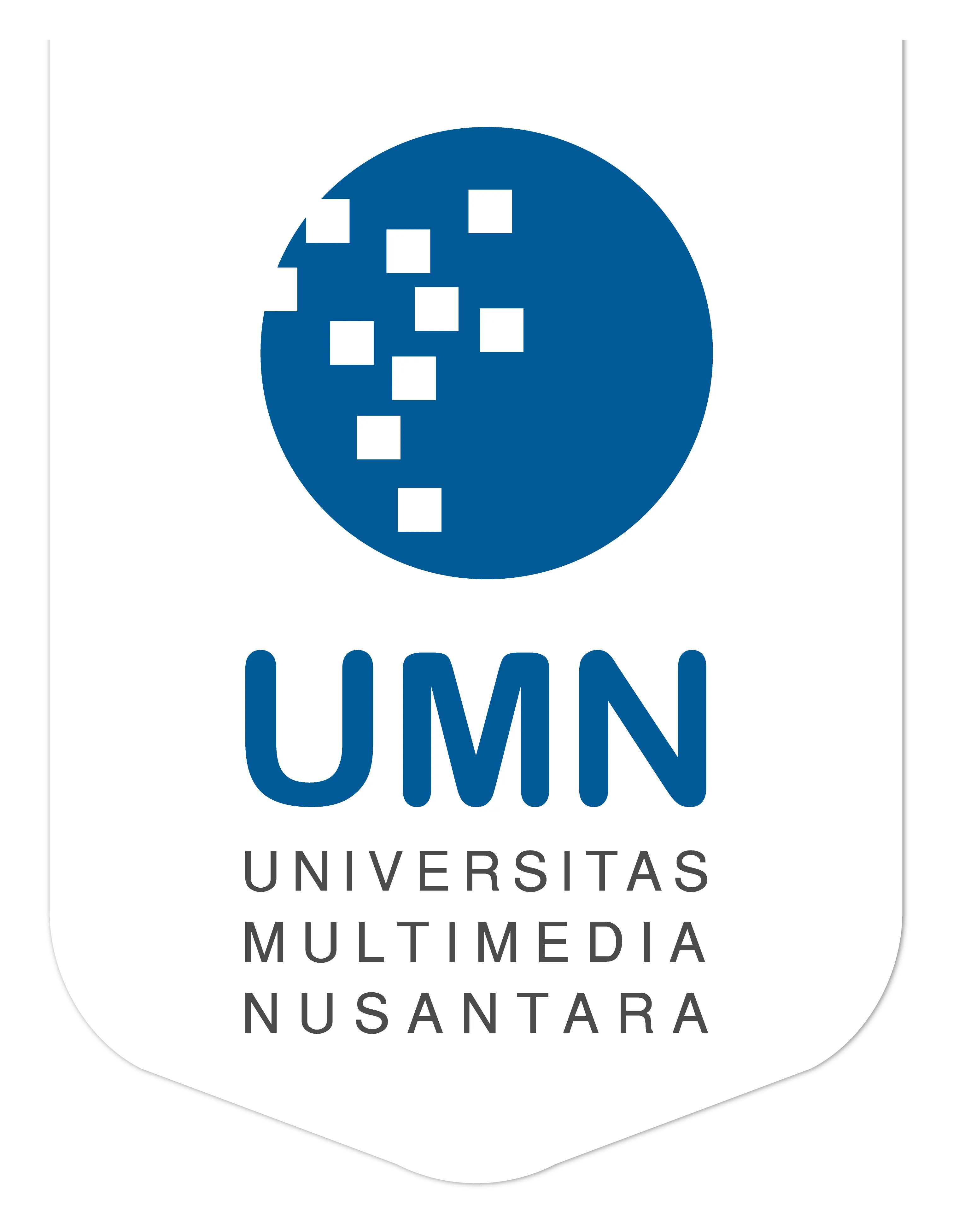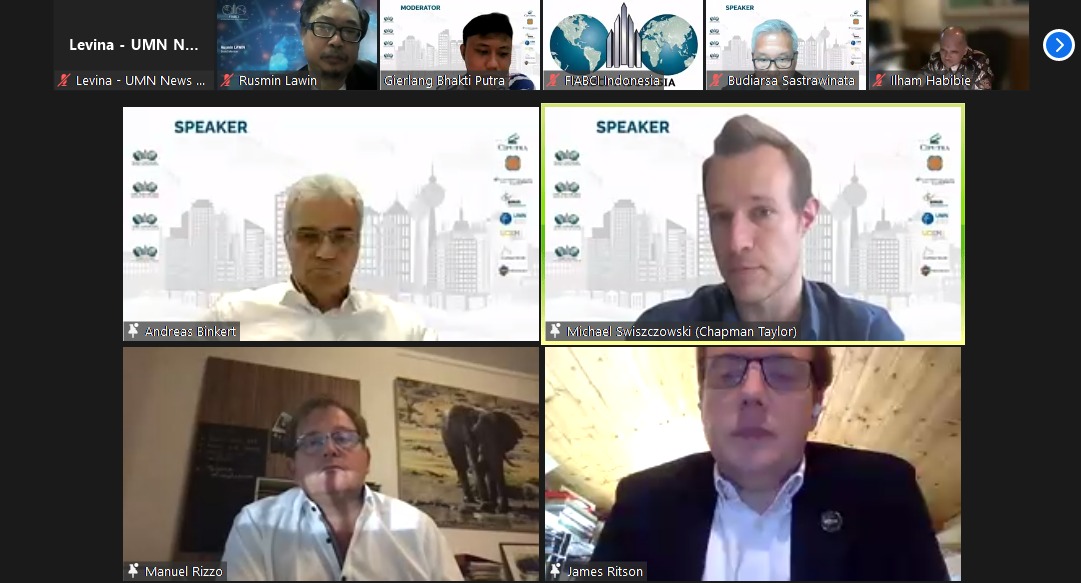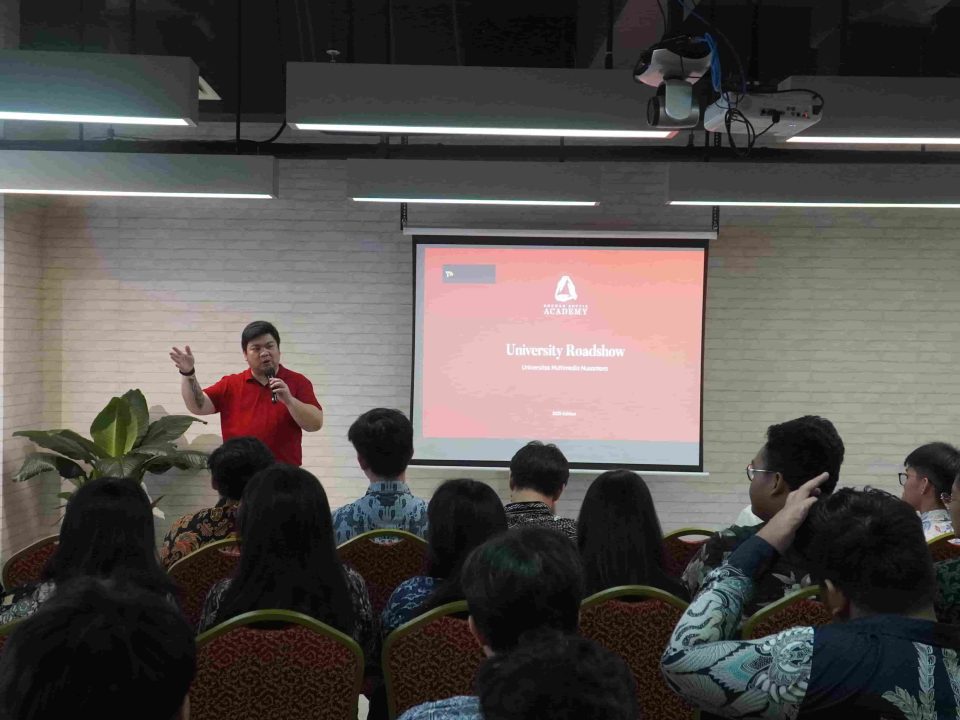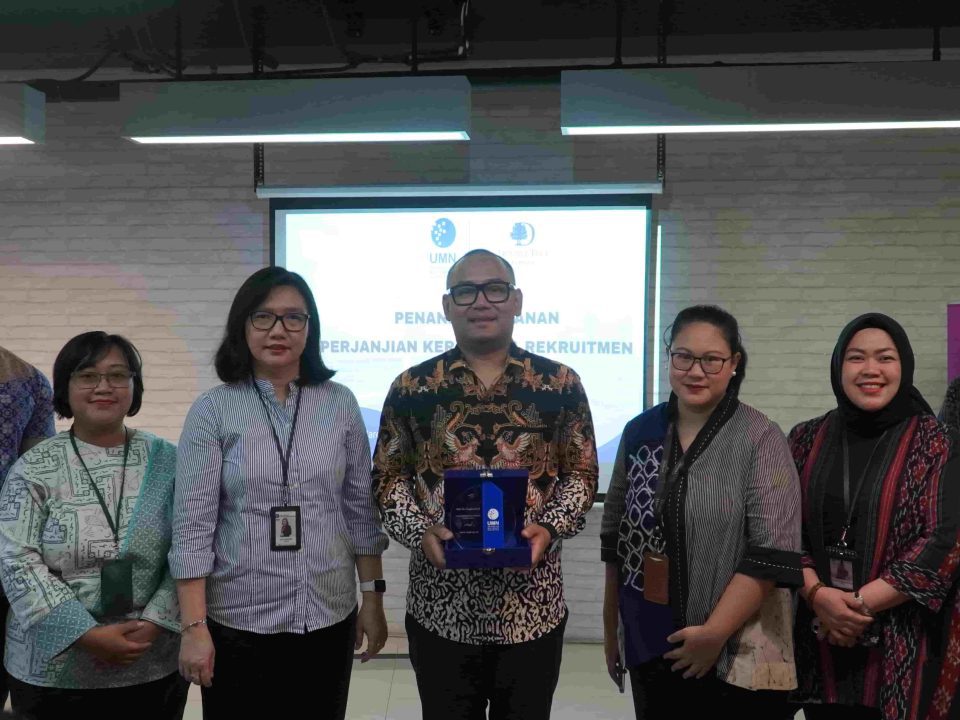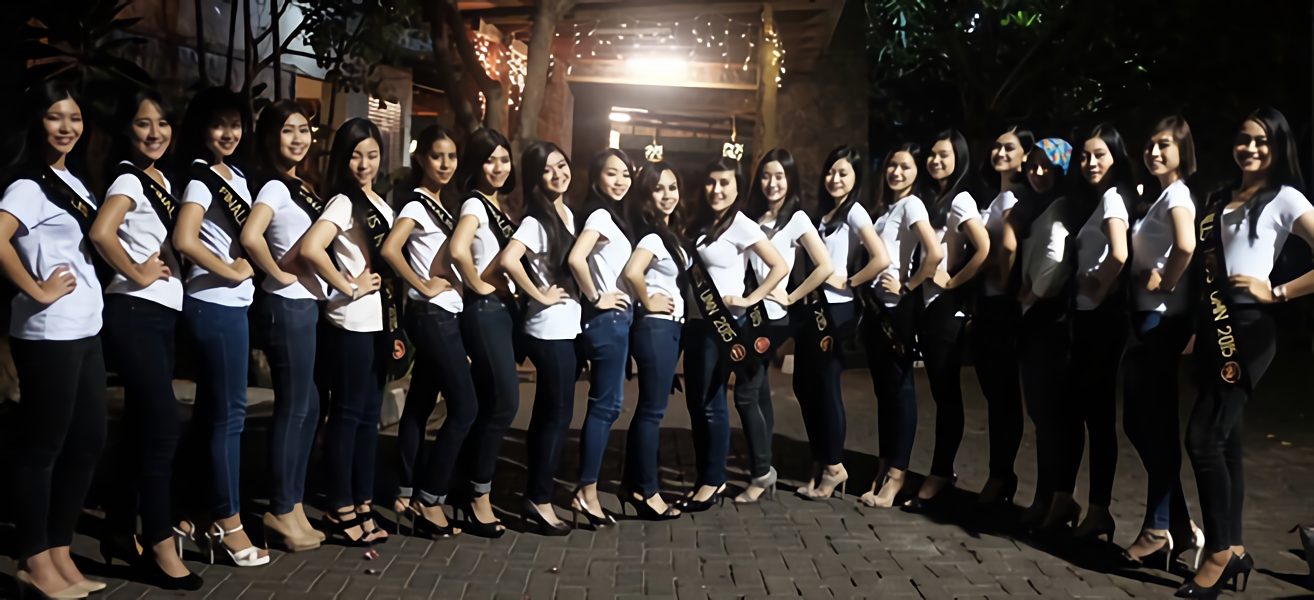
What’s At Miss UMN Quarantine 2015
September 20, 2021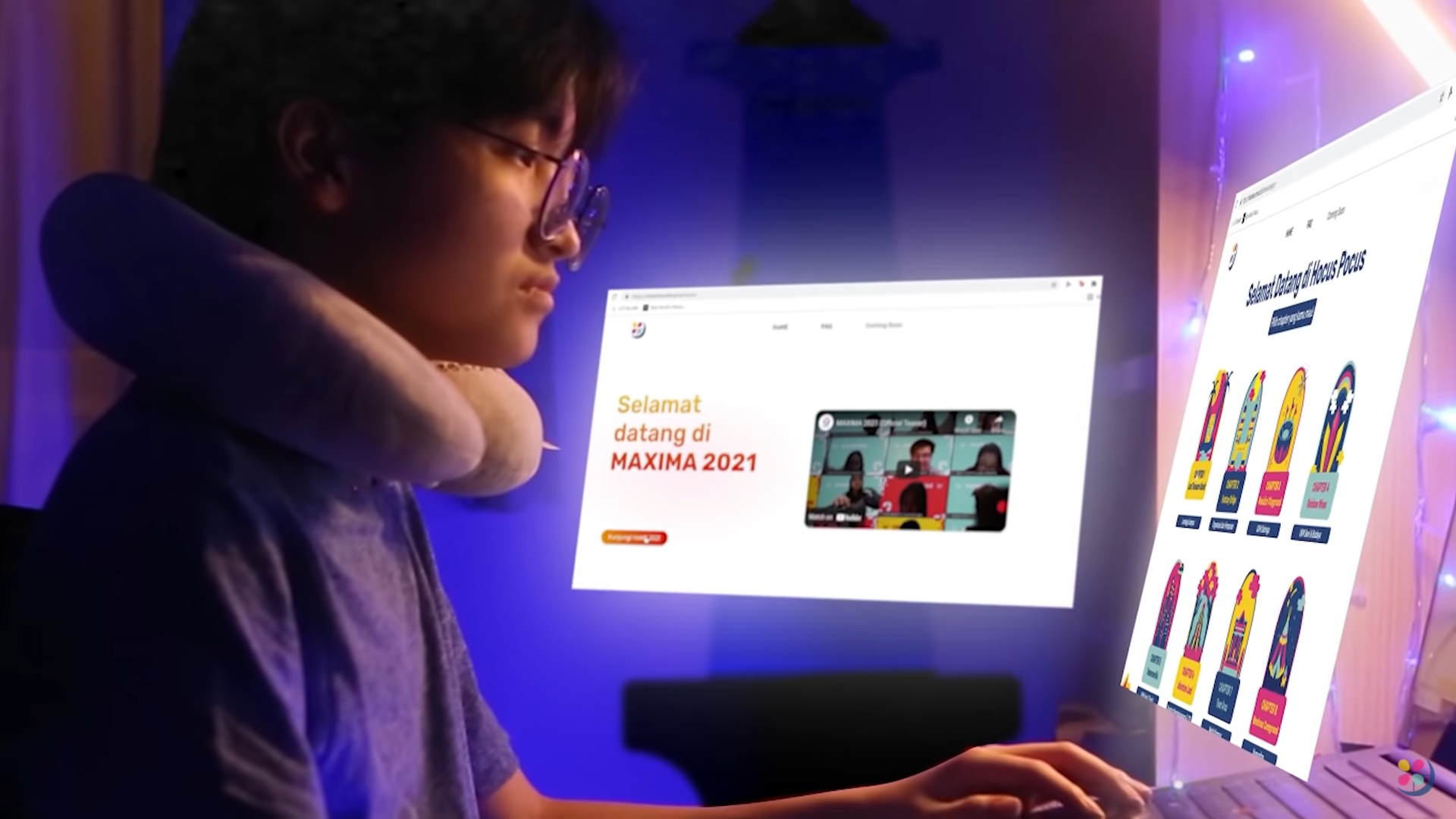
MAXIMA 2021: Dream Big, Build Enormous!
September 20, 2021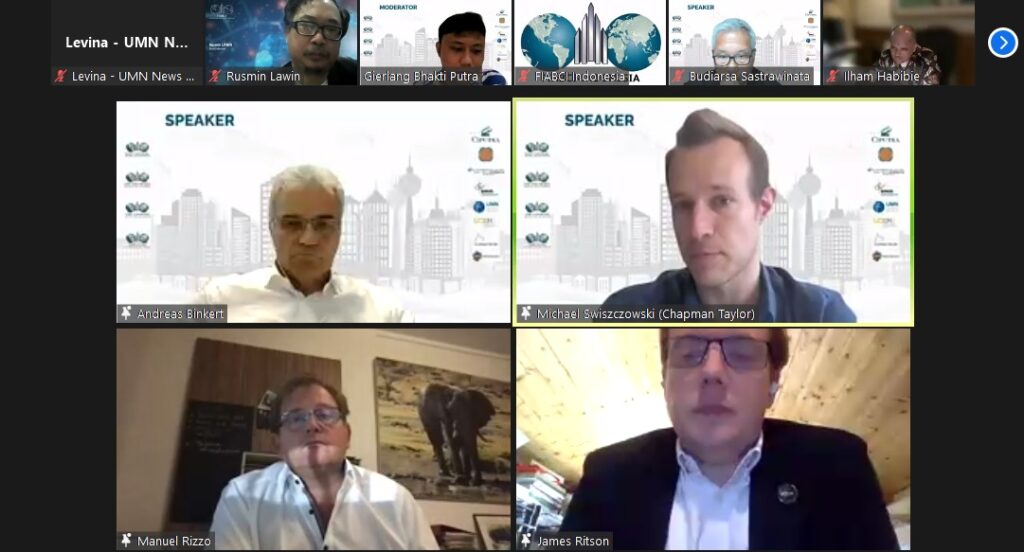
The International Federation of Real Estate FIABCI Indonesia webinar. (dok. UMN)
TANGERANG – With rainforests burning, the arctic ice melting, and sea levels rising, people are finally seeing climate change as a crisis. With the awareness on climate change rising, businesses are expected to evolve and take their part in reducing carbon emissions by embracing sustainability. One of them is the real estate industry.
According to the UN Environmental Programme, the real estate industry currently contributes to 30% of global annual greenhouse gas (GHG) emissions and consumes around 40% of the world’s energy. Which is why, the real estate industry becoming sustainable is very important.
On the 17th of September 2021, the International Federation of Real Estate FIABCI Indonesia organized a webinar themed “Sustainable Living: A Roadmap to Healthier and Safer Life With Practical Strategies.” This webinar is in collaboration with BINUS University, Universitas Multimedia Nusantara, and Universitas Ciputra Surabaya. It is also supported by the FIABCI-United Kingdom, FIABCI-Luxembourg, FIABCI-Suisse, CIPUTRA Group, Real Estate Indonesia (REI), Chapman Taylor Global Architects and Master planners, and Global Entrepreneurship Network (GEN) Indonesia.
“Real estate of the future should be livable, improving quality of life. It should also be sustainable, meaning net zero carbon and reduced emissions throughout the entire assets lifecycle. It should also be resilient, meaning it should stand both acute shock, chronic, and longer term changes and it should be affordable,” said Mr. Budiarsa Sastrawinata, the Managing Director of CIPUTRA Group, Chapter President of FIABCI-Indonesia during his opening remarks.
This webinar invites four keynote speakers which are Dr. Ing. Ilham A. Habibie M.B.A., Chairman of Indonesian National Council of Information Technology and Communication (WANTIKNAS). Mr. Manuel Rizzo, President of FIABCI – Luxembourg. Mr. Michael Swiszczowski, Director of Chapman Taylor Manchester Studio, UK. Dr. James Ritson BA (Hons). Grad. Dip. Arch. MA. PhD. FRGS, Program leader Building Surveying, Vice President ICOMOS ISCES, University College of Estate Management (UCEM), Reading, UK. and Mr. Andreas Binkert, President of 2000-Watt Smart Cities Association, Zurich, Switzerland.
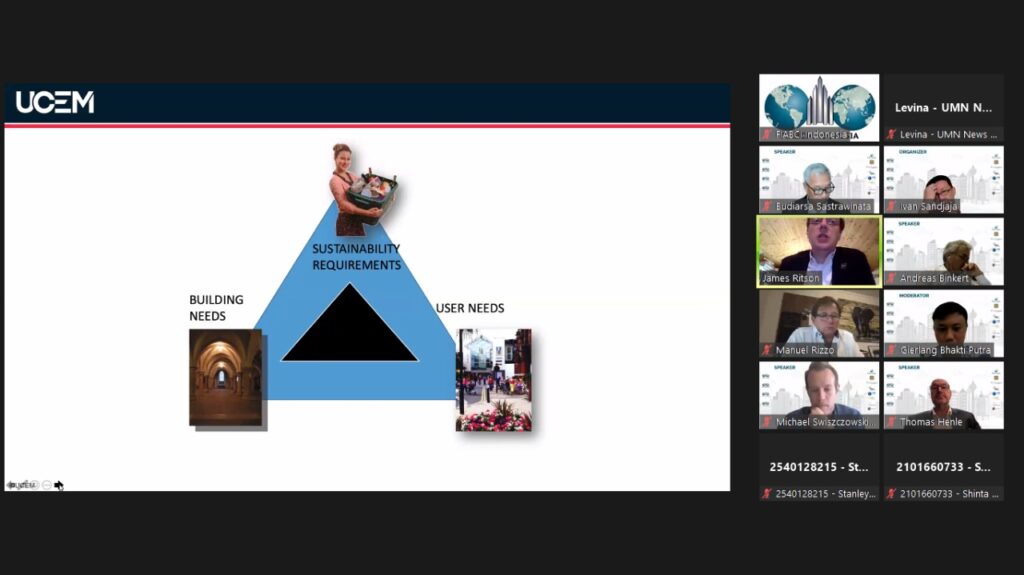
The International Federation of Real Estate FIABCI Indonesia webinar. (dok. UMN)
They talked about how the built environment from their respective countries are taking part in sustainability living. Focusing on how they are trying to make current spaces sustainable, how they are making new spaces sustainable, their challenges, possible solutions, and future plans.
An important note that Dr. Ritson and Mr. Swiszczowski stated during their presentation is that sustainable living is not just about climate action. UCEM and many other professional built environment professionals in the UK follows the Sustainable Development Goals (SDG), which he said all 17 sustainability goals are connected.
The way to think about it is that climate change is the result of our unsustainable actions and behavior. So to achieve the best climate action, the rest of the SDGs needs to be achieved as well.
Also read Sustainable the Environment, UMN Becomes the Best Energy and Water Management Campus in Indonesia
“The topic of this conference is health and wellbeing which is one of the UN’s SDG, but actually you can’t have healthy living in the modern world without having healthy and sustainable communities and cities. To have that, we need infrastructure, we need economic growth, clean and affordable energy, etc,” said Dr. Ritson.
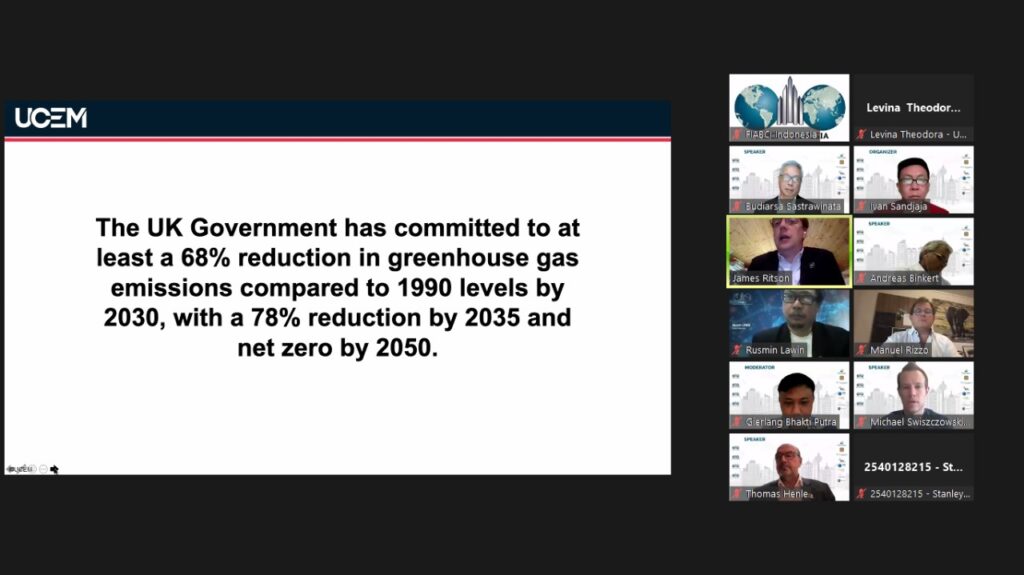
The International Federation of Real Estate FIABCI Indonesia webinar. (dok. UMN)
The UK government has committed to at least 68% reduction in greenhouse gas emissions compared to 1990 levels by 2030, with a 78% reduction by 2035 and net zero by 2050 which is a very ambitious goal. So to achieve that, they have been:
- Gradually tightening energy consuming appliances performance standards like investing in sustainable or public transports, discouraging diesel and petrol car use.
- Decarbonising the electricity grid like increasing renewable electricity generation capacity, shifting forward electricity as the primary energy source.
- Developing life time sustainability like incorporating lifetime carbon calculations in the built environment, developing the concept of circular economy, and lifecycle analysis.
- Future proofing and improving services infrastructure like reducing water leakage and smart metering
- Tightening building energy performance like dealing with issues relating to reducing carbon emissions from existing or historic built environments.
The challenges that most of the real estate industry have trying to be sustainable is how to transform existing or historic buildings. In the UK alone, there are over 4.7 million historic buildings. These buildings typically have the highest carbon emissions of any housings and twice the maintenance cost.
One of the most energy efficient ways to preserve historic buildings is to ensure that continued, regular maintenance is carried out to safeguard its historic fabric. The most sustainable strategy for historic housings is via historic building maintenance, benign improvements and periodic renewal.
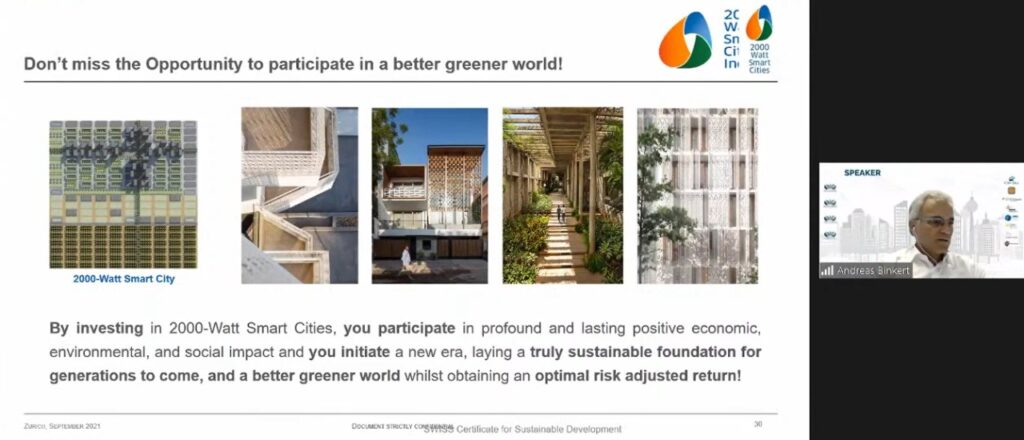
The International Federation of Real Estate FIABCI Indonesia webinar. (dok. UMN)
In Switzerland, they have a program called “2000-Watt Smart Cities”. This program can help reform old buildings sustainable and also newer buildings and spaces. They are currently working on cooperation with Indian states, even Indonesia, and possibly the rest of the world in the future.
“2000 watts of combustible energy and 2000 kilos of climate gas can be reached by 2035 if we apply today’s technologies properly. 2000-Watt Smart Cities will lead the way to NetZero and it’s adaptable to all climate zones,” said Mr. Binkert during his presentation.
Another important note that the speakers mentioned is about transportation. Even though real estate is all about buildings, sustainable transportation is important in reaching SDG goals.
To reinvent the city in a smart way, we need to rethink mobility. Mobility is good if it helps us connect but it’s also bad if it creates traffic. People need transportation to go from one building to another.
Not to mention, 180.000 people daily migrate to cities. They migrate to cities that are incapable of taking this load of newcomers. The bigger the cities, the bigger the attraction but also the bigger the risks like congestion, traffic jams, pollution, and health hazards.
“The city needs better connectivity with less traffic and that is possible only with high density and mixed-use. We also need a maximum quality of life that can be provided by new interconnected technologies 4.0, minimum resources consumption and CO-emittance is granted by 2000 Watt Society,” said Mr. Binkert.
Not only that it’s good for the environment and our quality of life, Mr. Binkert said that the 2000-Watt Smart Cities are a lot more efficient and cheaper than building like how we are now.
Developed nations must drastically reduce their foot-print whilst increasing quality of life, developing nations shall be given the chance to prosper without excessively emitting climate gases, man-made CO2 must be reduced globally to ZERO by 2050.
Even though climate change and being sustainable seems difficult and impossible, solutions are available. Let’s not miss the opportunity to create a greener world while we can.
By Levina Chrestella Theodora | UMN News Service
Kuliah di Jakarta untuk jurusan program studi Informatika| Sistem Informasi | Teknik Komputer | Teknik Elektro | Teknik Fisika | Akuntansi | Manajemen| Komunikasi Strategis | Jurnalistik | Desain Komunikasi Visual | Film dan Animasi | Arsitektur | D3 Perhotelan | International Program, di Universitas Multimedia Nusantara. www.umn.ac.id
